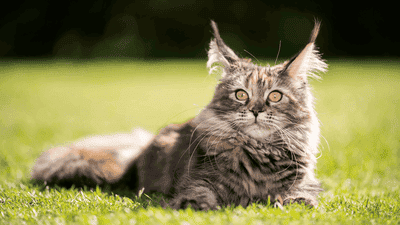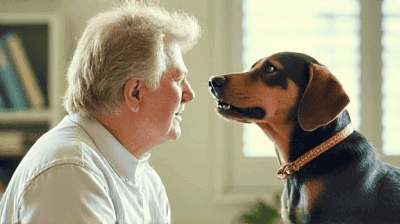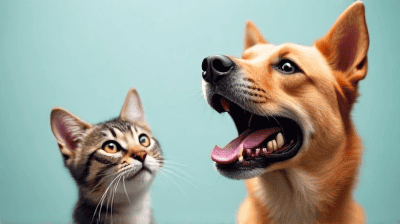Pet Nutrition Myths Busted: What You Should Really Be Feeding Your Furry Friends

As a pet nutritionist, I’ve spent years studying the dietary needs of pets and debunking common misconceptions about what they should eat. Pet nutrition is a topic filled with myths, often fueled by well-meaning but misinformed advice. These myths can lead to poor dietary choices, which can affect your pet’s health, energy levels, and overall well-being.
1. Myth: All Commercial Pet Foods Are the Same
The Reality
Not all commercial pet foods are created equal. The quality of ingredients, nutritional balance, and manufacturing processes vary significantly between brands. Some brands use fillers, artificial additives, and low-quality protein sources, while others prioritize high-quality, whole-food ingredients.
What to Look For
When choosing commercial pet food:
- Look for products that meet AAFCO (Association of American Feed Control Officials) standards.
- Check the ingredient list for whole proteins (e.g., chicken, beef, fish) as the first ingredient.
- Avoid foods with artificial colors, flavors, or preservatives.
- Consider your pet’s specific needs, such as age, size, and activity level.
2. Myth: Pets Should Eat a Grain-Free Diet

The Reality
The grain-free trend has gained popularity, but it’s not necessary for all pets. Grains like rice, oats, and barley can be a healthy source of carbohydrates, fiber, and essential nutrients. In fact, grain-free diets have been linked to an increased risk of heart disease in some dogs, particularly those predisposed to dilated cardiomyopathy (DCM).
When Grain-Free May Be Necessary
- If your pet has a diagnosed grain allergy or intolerance.
- For pets with specific health conditions that require a low-carb diet.
What to Do
If you’re considering a grain-free diet, consult your veterinarian or a pet nutritionist to ensure your pet’s nutritional needs are met.
3. Myth: Raw Diets Are the Best Option for All Pets
The Reality
Raw diets have gained a reputation for being “natural” and “healthy,” but they come with risks. Raw meat can contain harmful bacteria like Salmonella or E. coli, which can make your pet sick and pose a risk to humans in the household. Additionally, raw diets can be nutritionally unbalanced if not properly formulated.
When Raw Diets May Be Appropriate
- For pets with specific health conditions that benefit from a raw diet, such as certain allergies or digestive issues.
- When prepared under the guidance of a veterinarian or pet nutritionist to ensure safety and balance.
What to Do
If you’re interested in a raw diet, work with a professional to create a balanced, safe meal plan for your pet. Always handle raw food with care to prevent contamination.
4. Myth: Table Scraps Are Fine for Pets

The Reality
While it’s tempting to share your meals with your pet, many human foods are toxic or unhealthy for animals. Foods like chocolate, onions, garlic, grapes, and xylitol (a sugar substitute) can be harmful or even fatal to pets. Additionally, table scraps can lead to obesity, digestive issues, and nutritional imbalances.
Safe Human Foods
Some human foods can be safe and healthy for pets in moderation, including:
- Cooked lean meats (without seasoning or bones)
- Plain, unsalted vegetables like carrots, green beans, and sweet potatoes
- Small amounts of plain, unsweetened yogurt or cheese
What to Do
Stick to pet-safe foods and avoid giving your pet table scraps. If you want to treat your pet, opt for healthy, vet-approved snacks.
5. Myth: Pets Don’t Need Fresh Water All the Time
The Reality
Hydration is just as important for pets as it is for humans. Pets need access to fresh, clean water at all times to support digestion, regulate body temperature, and maintain overall health. Dehydration can lead to serious health issues, including kidney failure.
Tips for Encouraging Hydration
- Provide multiple water bowls around your home.
- Clean and refill water bowls daily.
- Consider a pet water fountain to encourage drinking.
- Monitor your pet’s water intake, especially during hot weather or after exercise.
6. Myth: Supplements Are Necessary for All Pets

The Reality
While supplements can be beneficial for pets with specific health conditions, they are not necessary for all pets. Most high-quality commercial pet foods are formulated to meet your pet’s nutritional needs. Over-supplementing can lead to nutrient imbalances and health problems.
When Supplements May Be Needed
- For pets with diagnosed deficiencies or health issues.
- For pets on homemade diets that may lack certain nutrients.
- For senior pets or those with joint issues, who may benefit from glucosamine or omega-3 supplements.
What to Do
Consult your veterinarian before adding supplements to your pet’s diet. They can recommend the right products and dosages based on your pet’s needs.
7. Myth: Pets Can Eat the Same Food Their Entire Lives
The Reality
A pet’s nutritional needs change throughout their life. Puppies and kittens require higher levels of protein and fat to support growth, while senior pets may need fewer calories and more joint-supporting nutrients. Additionally, changes in health, activity level, or weight may require dietary adjustments.
Life Stage Nutrition
- Puppies/Kittens: High-protein, high-fat foods for growth and development.
- Adult Pets: Balanced nutrition to maintain health and energy.
- Senior Pets: Lower-calorie foods with added joint and immune support.
What to Do
Choose pet foods formulated for your pet’s life stage and adjust their diet as needed based on their health and activity level.
8. Myth: Cats Can Thrive on a Vegetarian or Vegan Diet
The Reality
Cats are obligate carnivores, meaning they require nutrients found only in animal products, such as taurine, arachidonic acid, and vitamin A. A vegetarian or vegan diet can lead to severe nutritional deficiencies and health issues in cats.
What to Feed Cats
- High-quality commercial cat food with animal-based protein.
- Wet or raw food to support hydration and mimic their natural diet.
What to Do
If you’re considering a plant-based diet for your pet, consult a veterinarian or pet nutritionist to ensure their nutritional needs are met. Note that this approach is generally not recommended for cats.
9. Myth: Homemade Diets Are Always Healthier
The Reality
While homemade diets can be beneficial when properly formulated, many are nutritionally unbalanced and lack essential nutrients. Without professional guidance, homemade diets can lead to deficiencies or excesses that harm your pet’s health.
How to Make a Balanced Homemade Diet
- Work with a veterinarian or pet nutritionist to create a well-rounded meal plan.
- Include a variety of protein sources, vegetables, and grains (if appropriate).
- Add supplements as needed to ensure nutritional completeness.
What to Do
If you’re interested in preparing homemade meals for your pet, seek professional guidance to avoid potential pitfalls.
Conclusion
Pet nutrition is a complex topic, and it’s easy to fall for myths that sound convincing but lack scientific backing. As a pet nutritionist, my goal is to help you make informed decisions about your pet’s diet based on their individual needs. Remember, a balanced diet is key to your pet’s health, energy, and longevity. Always consult your veterinarian or a pet nutritionist if you have questions or concerns about what to feed your furry friend. By busting these myths and focusing on evidence-based nutrition, you can ensure your pet thrives for years to come.








